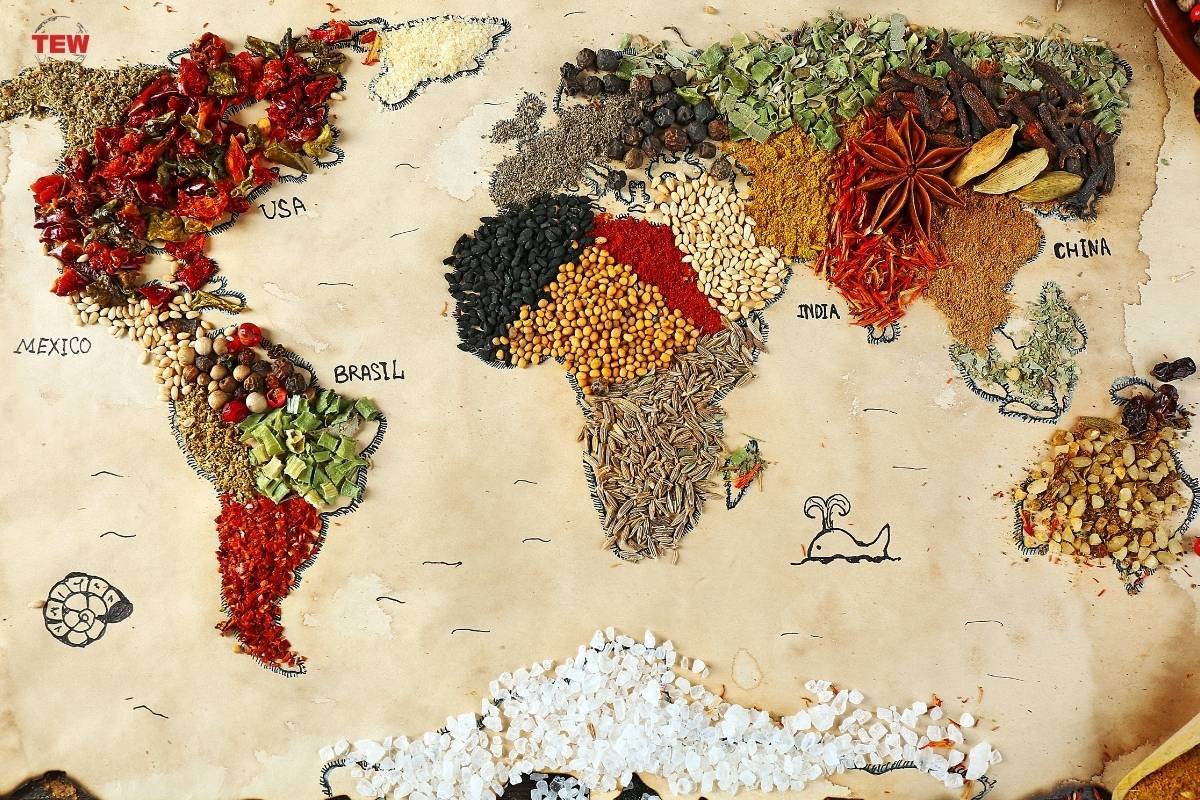In the marketplace of American cuisine, the influence of seasonings and spices extends far beyond mere taste enhancement. These potent ingredients are not just culinary essentials; they are pivotal in driving the business strategies of some of the nation’s most successful food-related enterprises. As consumer preferences evolve and the demand for diverse flavors grows, companies across the United States increasingly turn to seasonings and spices to differentiate their products and capture new market segments. Keep reading to learn how these flavorful elements are integrated into America’s top-selling products and the business dynamics that govern this spicy trade.
The Spice Trade: A Business Overview

The trade in seasonings and spices has been a cornerstone of global commerce for centuries, but its role in modern American business is particularly significant. Today, the U.S. spice market is characterized by its dynamic growth and its strategic role in food production and marketing. Companies, from startups to established giants, leverage these ingredients to appeal to the palates of a diverse consumer base seeking new and exotic tastes.
Spice importers and distributors are at the heart of this industry, managing complex supply chains that span continents. They must navigate various challenges, from fluctuating commodity prices and trade regulations to the impact of climate change on spice yields. Success in this sector requires a keen understanding of global market trends and consumer behavior. Key players in the market have honed their expertise in sourcing, logistics, and quality control to ensure that the American table remains as vibrant and diverse as its demographics.
Starting Up in the Spice World

The spice sector offers enticing opportunities for entrepreneurs wondering how to start a food business. The initial steps involve understanding the source of raw materials—seasonings and spices—and the cultural contexts behind their flavors. This knowledge is crucial for product development and marketing strategies that resonate with specific target audiences.
Startup ventures in this field often focus on niche markets, offering unique blends or ethically sourced products that appeal to eco-conscious consumers. Branding in this industry goes beyond mere labeling; it encompasses the story of the spice—from the farm to the kitchen table—and emphasizes quality and sustainability. In this competitive arena, differentiation is key. New businesses must not only offer distinctive products but also demonstrate how they enhance their customers’ culinary experiences.
Entrepreneurial success in the spice industry requires a deep understanding of the product and the market. Networking with suppliers, attending food expos, and engaging with cultural groups can provide invaluable insights and business leads. Effective use of digital marketing and e-commerce platforms is also critical as online sales of seasonings and spices continue to surge. This strategic approach allows new businesses to reach a broader audience and scale up efficiently.
Innovation and Flavor: The Spicy Secret of Frozen Foods

The intersection of spices and the frozen food sector showcases a remarkable synergy where tradition meets innovation. As consumer preferences shift towards convenience without sacrificing quality, a frozen food manufacturer must adapt by infusing diverse spices into their offerings. This strategic incorporation enhances flavor profiles and significantly boosts the appeal of frozen products in a market crowded with fresh alternatives.
Frozen meals featuring well-crafted, spice-infused recipes can mimic the taste of home-cooked food, giving busy consumers a tempting choice that doesn’t compromise flavor. For manufacturers, the challenge lies in selecting the right blend of spices that can withstand freezing and reheating while maintaining their integrity and impact. The development process often involves extensive testing and collaboration with culinary experts to ensure that the end product can successfully bridge the gap between convenience and culinary delight.
These companies are keenly aware of the marketing potential that spices bring. Ethnic cuisines offer a particularly lucrative avenue with their rich arrays of spices. Manufacturers can position their products as innovative and culturally enriching by tapping into trends such as increased consumer interest in global flavors. This strategy attracts food enthusiasts and caters to immigrant communities seeking familiar tastes in convenient formats.
Sustaining Success: The Long-term View in Spice Utilization
The enduring success of businesses that rely heavily on spices hinges on sustainable practices and foresight in product development. As the demand for spices grows, so does the need for sustainable sourcing to support environmental, economic, and social health. Companies at the forefront of the spice industry invest in partnerships with local farmers, employ fair trade practices, and support agricultural advancements that increase yield without depleting resources.
Forward-thinking companies are continually exploring new scientific advancements in spice processing and preservation. This research enhances the quality and flavor of spices and extends their shelf life, making them more appealing and practical for both manufacturers and consumers.
Seasonings and spices are more than just ingredients; they are essential to America’s food industry, driving innovation and market expansion. As businesses harness the power of these flavor enhancers, they contribute to the culinary landscape, economic growth, and cultural exchange. The future of America’s food industry looks vibrant and flavorful, seasoned generously with the spirit of innovation and a deep respect for tradition. As this sector continues to evolve, it will undoubtedly remain a key ingredient in the recipe for America’s commercial success.





